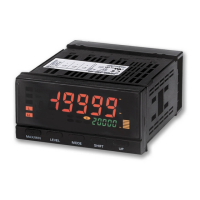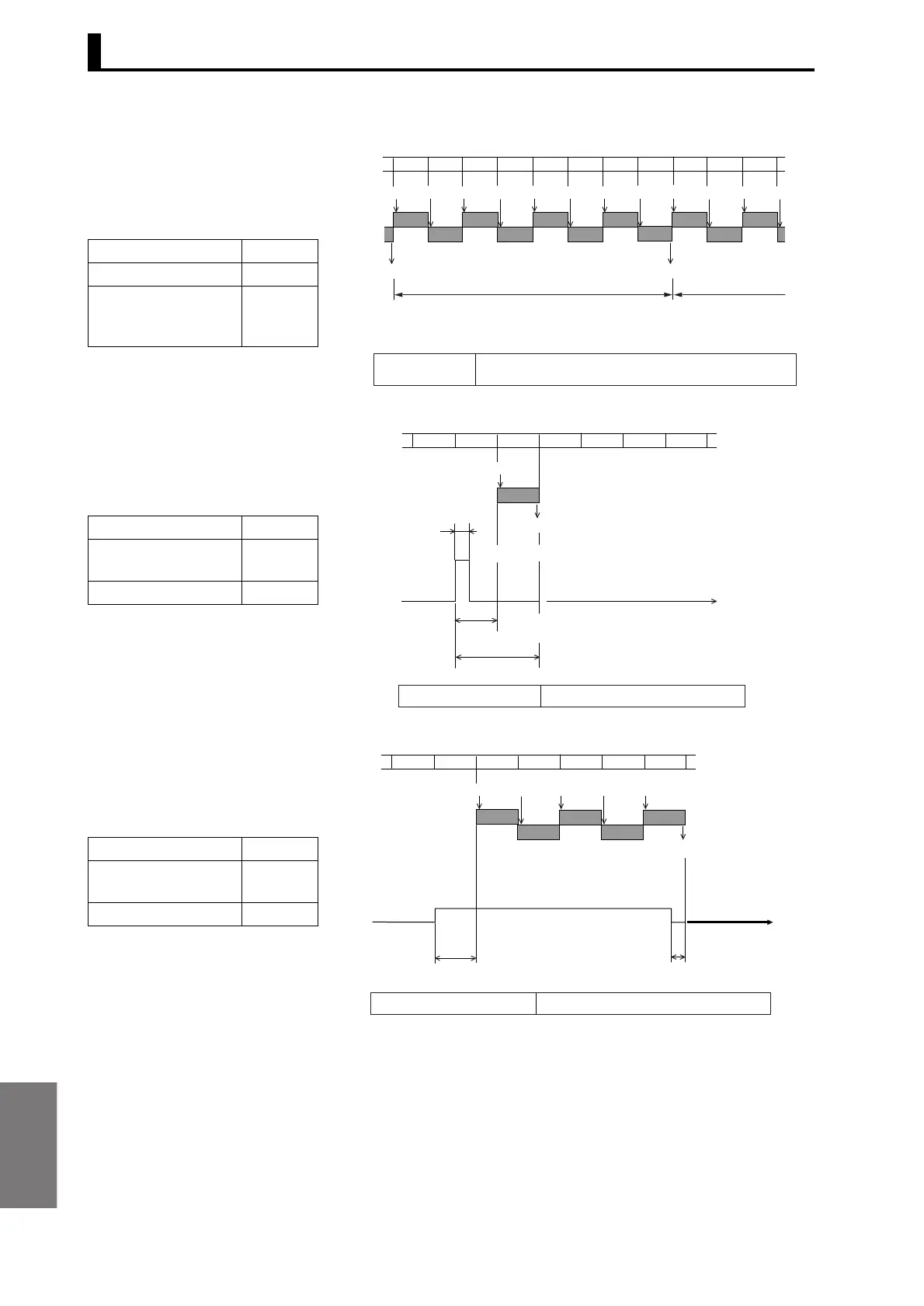Appendices
Appendices
A-16
Example 3
The Unit operates as shown
in the diagram to the right
for the settings shown in the
table below.
Example 4
The Unit operates as shown
in the diagram to the right
for the settings shown in the
table below.
Example 5
The Unit operates as shown
in the diagram to the right
for the settings shown in the
table below.
Calculation A+B
Timing hold mode Normal
Averaging times (n)
8 times
simple
averaging
Input A
Input B
Input
InputInput
Input
Input
Output
Input
Output
Input
0.5
0.5
0.5
0.5
0.5 ms × M (averaging times)
0.5 0.5 0.5
Comparative output
response time
For simple averaging
If the number of averaging times is 8, the comparative output that corresponds
to the average for 8 read inputs (4 input A's and 4 input B's) is output.
4 ms + output response time (See note 1.)
= 0.5 ms × M (averaging times) + output response time (See note 1.)
Input
Input
Input
Input Input
0.5
0.5 0.50.5
Calculation A
Timing hold mode Samplin
g hold
Averaging times (n) Once
Input
Output
0.5 0.5 0.5 0.5 0.5 0.5 0.5
Timing input received
0.5 to 1.0 ms Timing input processing time
1.0 to 1.5 ms
0.5 ms min.
Comparative output response time
Next timing input receive enabled
1.0 to 1.5 ms + output response time (See note 1.)
Calculation A+B
Timing hold mode Peak
hold
Averaging times (n) Once
Input
Input B
Input A
Output
Input Input Input Input
0.5 0.5 0.5 0.5 0.5 0.5 0.5
Timing input
Timing input processing
0.5 to 1.0 ms
Comparative output response time
Next timing input
Receive enabLed
0.5 ms max. + output response time (See note 1.)
0.5 ms max.

